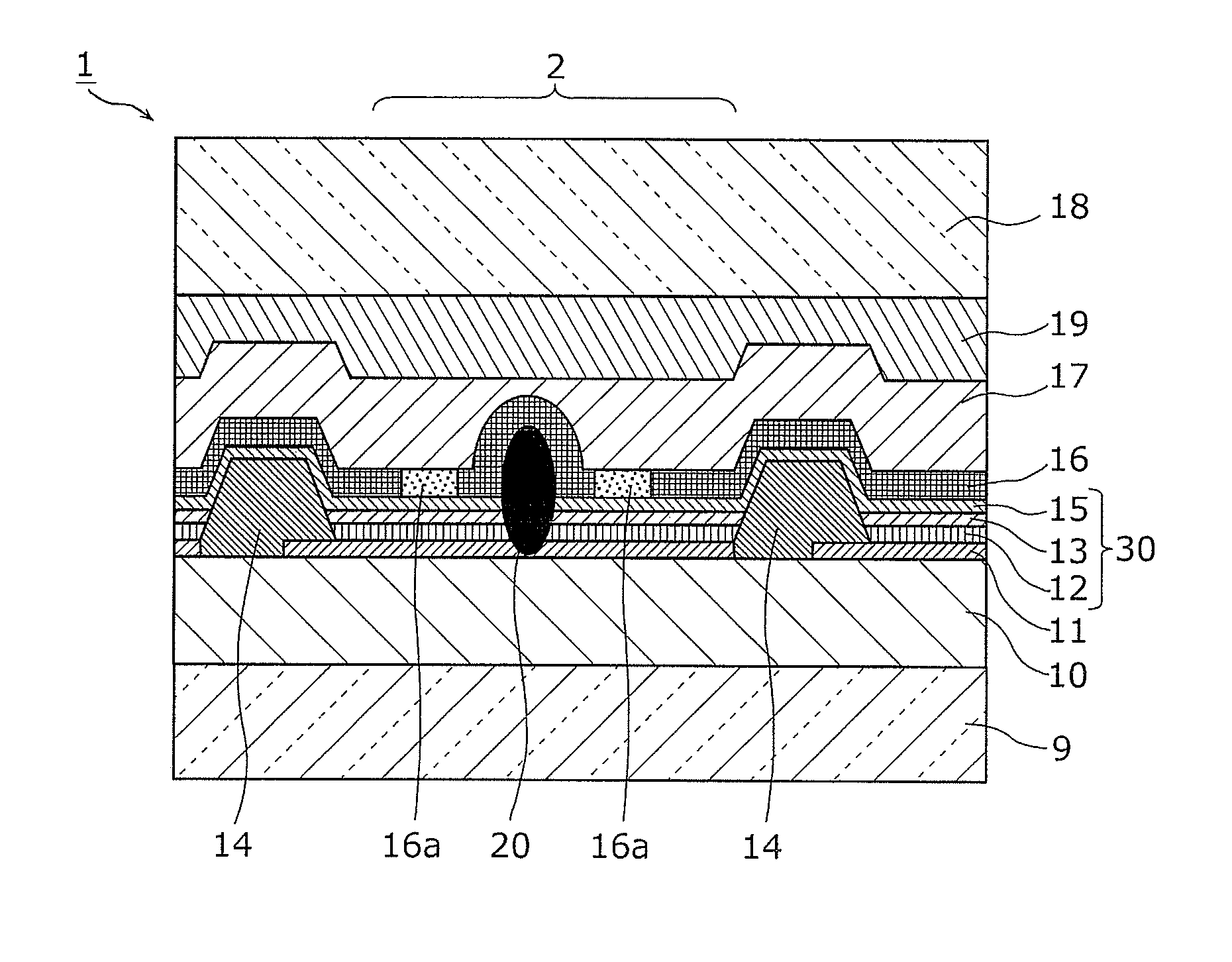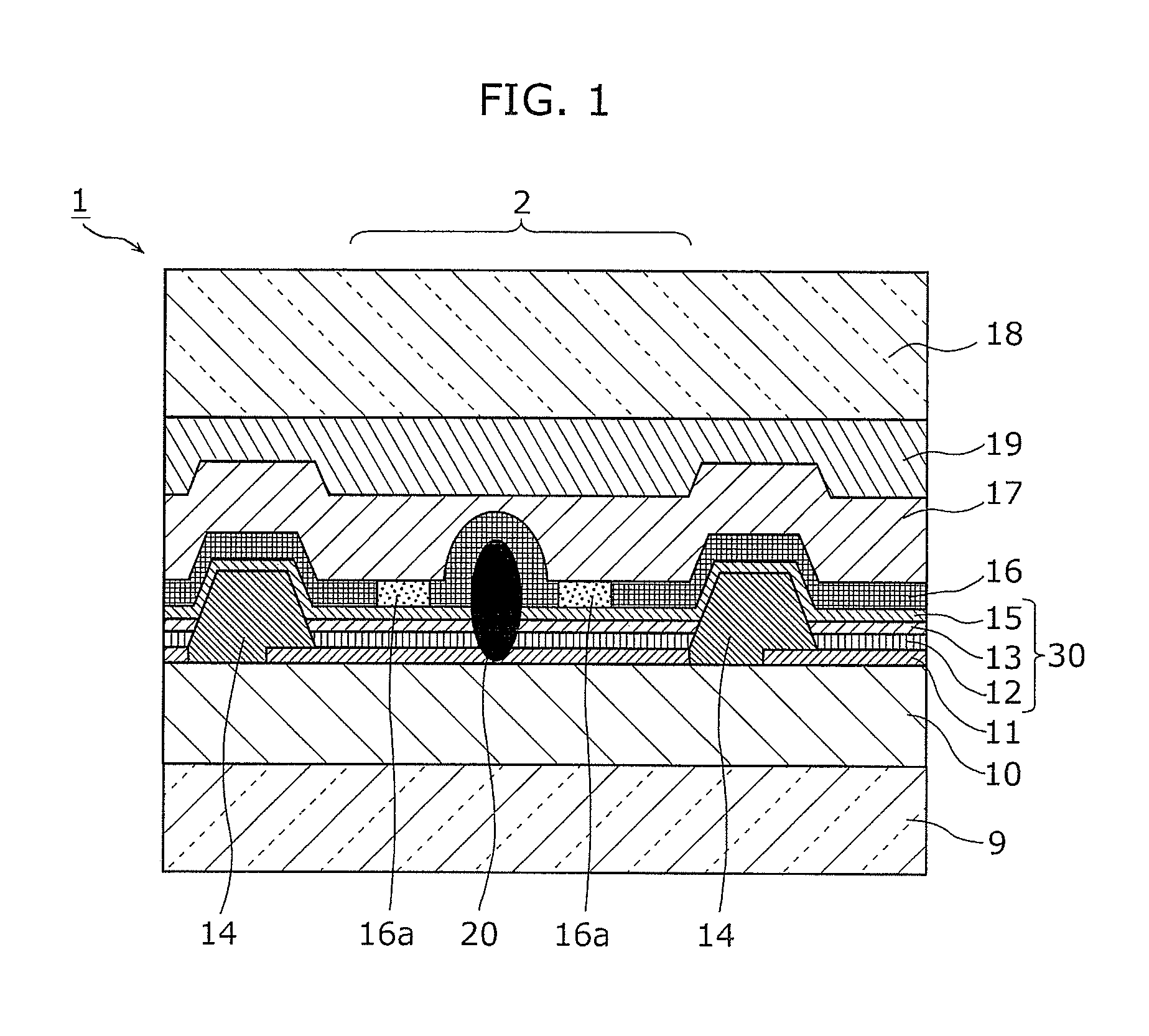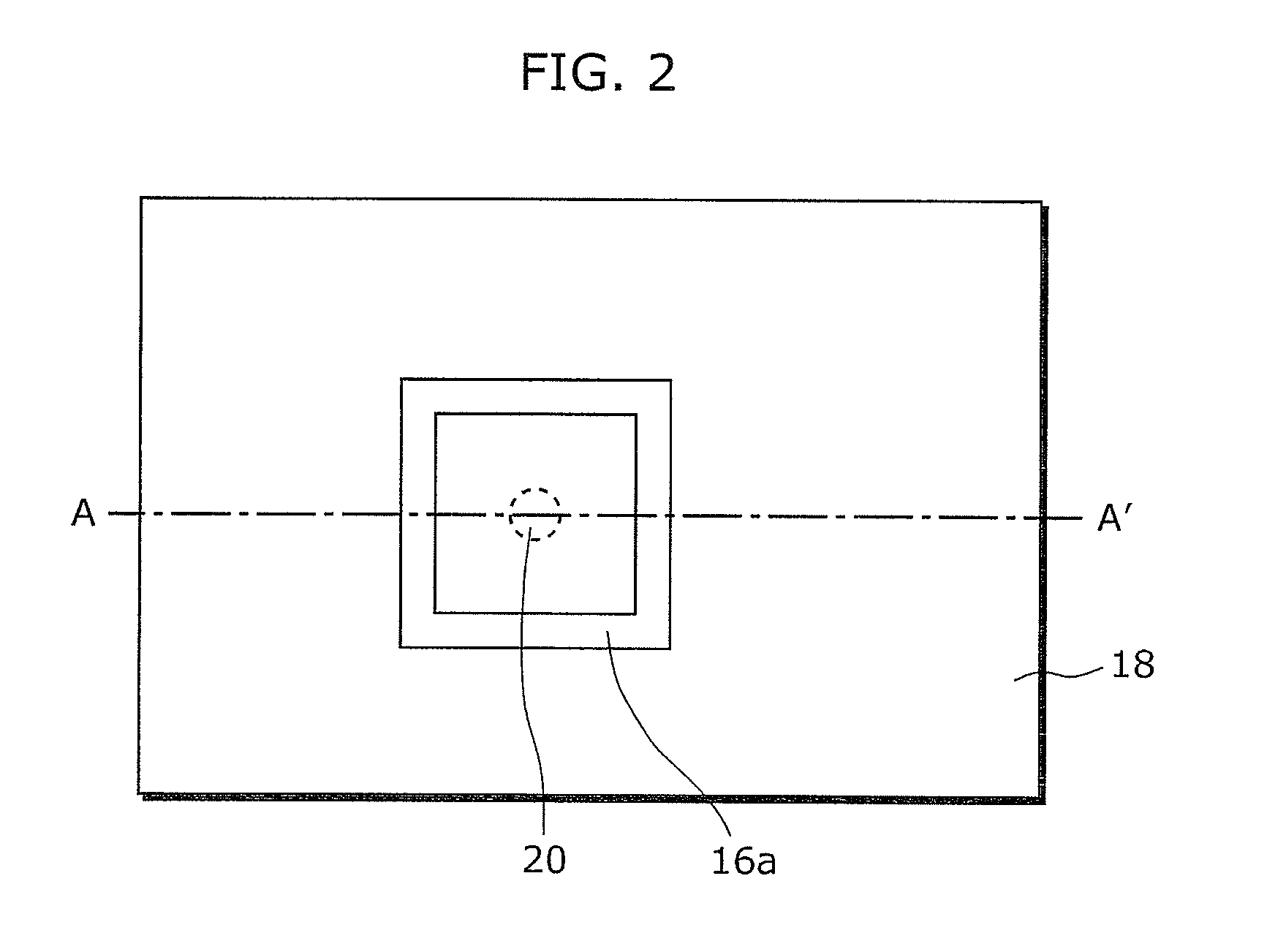Method of manufacturing organic electroluminescence device and method of setting laser focal position
a laser beam and laser beam technology, applied in the direction of organic semiconductor devices, semiconductor devices, electrical devices, etc., can solve the problems of difficult laser focus on the layer to be irradiated, inability to suppress damage on the peripheral portion, and difficult to solve, so as to solve the short circuit reliably and efficiently, solve the short circuit, and accurately determine the focal position of the laser beam
- Summary
- Abstract
- Description
- Claims
- Application Information
AI Technical Summary
Benefits of technology
Problems solved by technology
Method used
Image
Examples
first embodiment
[0056]FIG. 1 is a schematic cross-sectional view of an organic EL device according to a first embodiment of the present invention. An organic EL device 1 shown in the figure is an organic functional device including an anode, a cathode, and an organic layer interposed between the two electrodes and including a luminescent layer.
[0057]As shown in FIG. 1, the organic EL device 1 includes, on a transparent glass 9, a flattening film 10, an anode 11, a hole injection layer 12, a luminescent layer 13, a bank 14, an electron injection layer 15, a cathode 16, a thin-film encapsulating layer 17, an encapsulating resin layer 19, and a transparent glass 18.
[0058]The anode 11 and the cathode 16 correspond, respectively, to a lower electrode layer and an upper electrode layer according to the present invention. In addition, the hole injection layer 12, the luminescent layer 13, and the electron injection layer 15 correspond to the organic layer in the present invention.
[0059]The transparent gla...
PUM
 Login to View More
Login to View More Abstract
Description
Claims
Application Information
 Login to View More
Login to View More - R&D
- Intellectual Property
- Life Sciences
- Materials
- Tech Scout
- Unparalleled Data Quality
- Higher Quality Content
- 60% Fewer Hallucinations
Browse by: Latest US Patents, China's latest patents, Technical Efficacy Thesaurus, Application Domain, Technology Topic, Popular Technical Reports.
© 2025 PatSnap. All rights reserved.Legal|Privacy policy|Modern Slavery Act Transparency Statement|Sitemap|About US| Contact US: help@patsnap.com



